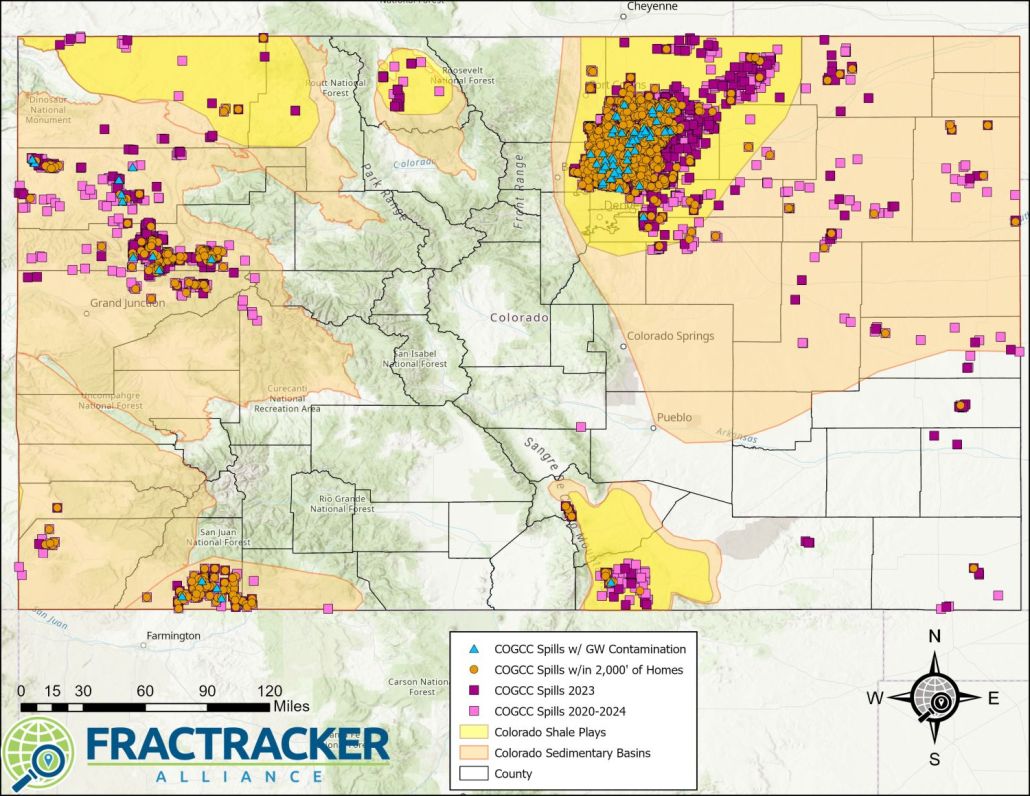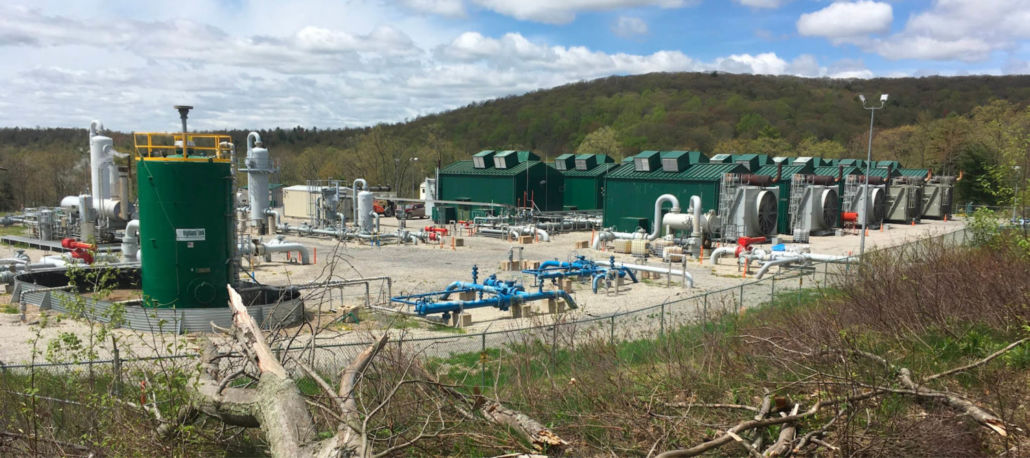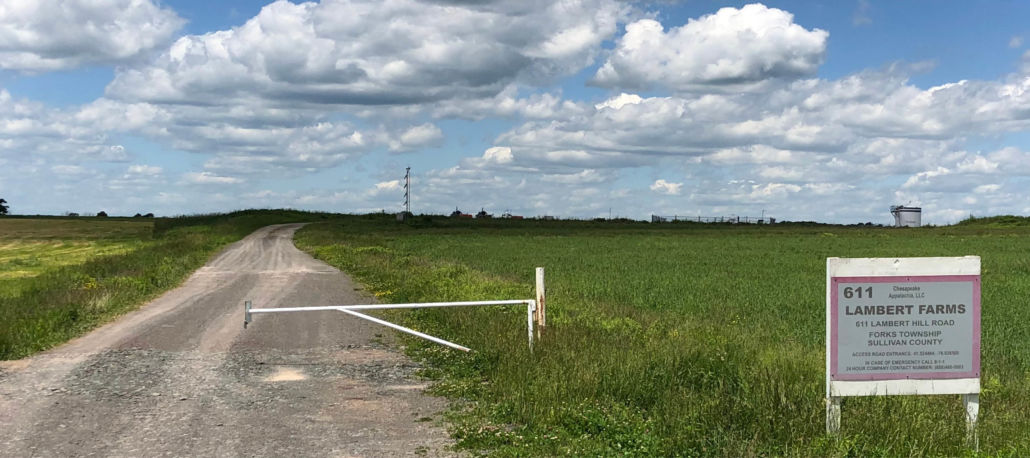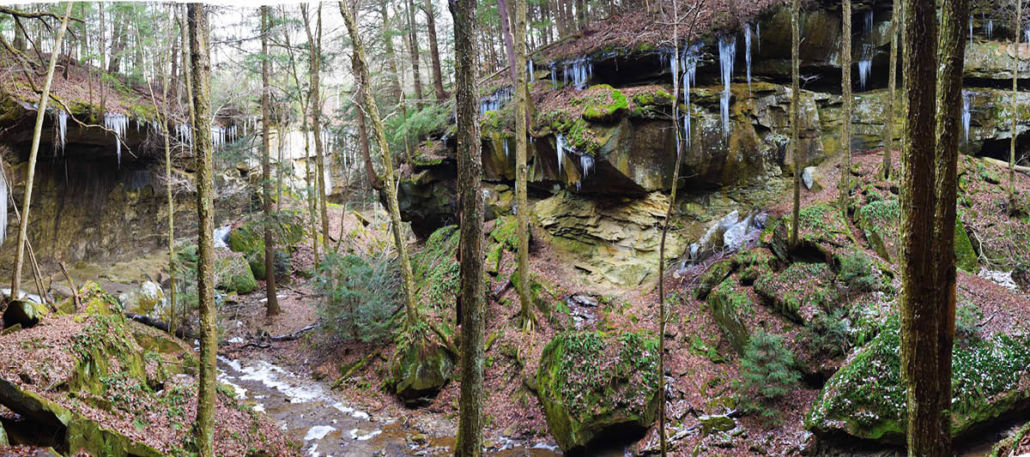 https://www.fractracker.org/a5ej20sjfwe/wp-content/uploads/2024/08/Midas6M_RecvFacil_042024_Header.jpg
891
1500
Matt Kelso, BA
https://www.fractracker.org/a5ej20sjfwe/wp-content/uploads/2021/04/2021-FracTracker-logo-horizontal.png
Matt Kelso, BA2024-08-01 20:41:312024-08-02 17:55:17Pennsylvania Oil and Gas Industry Trends: Drilled Wells, Violations, Production, and Waste
https://www.fractracker.org/a5ej20sjfwe/wp-content/uploads/2024/08/Midas6M_RecvFacil_042024_Header.jpg
891
1500
Matt Kelso, BA
https://www.fractracker.org/a5ej20sjfwe/wp-content/uploads/2021/04/2021-FracTracker-logo-horizontal.png
Matt Kelso, BA2024-08-01 20:41:312024-08-02 17:55:17Pennsylvania Oil and Gas Industry Trends: Drilled Wells, Violations, Production, and WasteConventional Oil & Gas Drillers Dispose Of Drill Cuttings By ‘Dusting’ – Blowing Them On The Ground, And In The Air Around Drill Sites
Overview
From 2016 to 2021, DEP approved 752 plans for the permanent disposal of drill cuttings at oil and gas well drilling sites through the decades-old practice of “dusting”—forcefully blowing drill cuttings on the ground around their drilling sites, which exposes humans to particulates that may impair lung function, aggravate asthma symptoms, cause irregular heartbeat and heart attacks, and lead to premature death in those with heart and lung diseases, such as chronic obstructive pulmonary disease (COPD).
From 2016 to 2021, DEP approved 752 plans for the permanent disposal of drill cuttings at oil and gas well drilling sites through the decades-old practice of “dusting”– forcefully blowing drill cuttings on the ground around their drilling sites, according to DEP’s response to a Right To Know request.
DEP said 721 of the alternative on-site drill cutting waste disposal plans were for conventional oil and gas well drillers.
Drill cuttings are the rock ground up by drill bits during oil and gas well drilling.
The “dusting” process is approved by DEP as one of several on-site alternative and permanent methods of disposal for “uncontaminated” drill cuttings for both conventional [ 25 Pa. Code Section 78.61(d) ] and unconventional drilling sites [ 25 Pa. Code Section 78a.61(d) ].
Up to 70,000 tons of material for every 1,500 foot of well depth is estimated to have been permanently disposed of on conventional drill sites and frequently in the air under the 721 DEP-approved plans, according to calculations by the FracTracker Alliance.
There is no way to confirm that oil and gas operators are only disposing of “uncontaminated” drill cuttings by “dusting,” unless a DEP inspector actually goes on-site to verify what’s going on.
There is also no way to accurately confirm the exact amount of drill cuttings that are blown in the air off well sites because there is no air monitoring.
“Dusting” allows conventional oil and gas drillers to avoid the cost of disposing of drill cuttings at landfills.
By avoiding landfills, oil and gas operators also avoid having to comply with the waste disposal regulations that go along with it.
One prominent issue is the fact that drill cuttings going to landfills have triggered radiation monitoring equipment meant to catch sources of radiation in waste going to facilities for disposal.
The naturally-occurring radioactive radium in drill cuttings [TENORM] prompted DEP to develop a new, updated draft technical guidance on radiation monitoring and how to better manage loads of waste with radiation issues. The guidance is now in the process of being finalized. Read more here.
Naturally-occurring radioactive radium in conventional oil and gas wastewater spread on dirt and gravel roads is also raising concerns. Read more here.
On April 25, Kurt Klapkowski, Acting DEP Deputy Secretary for Oil and Gas Management, told the DEP Oil and Gas Technical Advisory Board the new conventional oil and gas well plugging program funded by the federal Bipartisan Infrastructure Law is prompting a review of regulations allowing on-site disposal of radioactive and nonradioactive well plugging waste. Read more here.
Klapkowski said they were evaluating whether having “mini disposal areas” at potentially thousands of plugged well sites under the expanded plugging program is a good idea.
Wells Performing Dusting of Drill Cuttings in PA
This map shows wells in Pennsylvania that used a technique known as dusting to dispose of drill cuttings. This is associated with an article that originally appeared on PA Environment Digest Blog.
View the map “Details” tab below in the top right corner to learn more and access the data, or click on the map to explore the dynamic version of this data. Data sources are also listed at the end of this article.
View Full Size Map | Updated 4/18/2022 | Map Tutorial
What’s Supposed To Happen
According to DEP, if “dusting” operations are done properly, “uncontaminated” drill cuttings are forcefully pushed out of the well by compressed air and travel through a “drill rig diverter” to be blown onto the ground around the well pad.
DEP said, “usually, there is only enough force generated by the rig to expel the cuttings approximately 100 feet.”
DEP added, to help control fugitive dust emissions, “a common measure used by operators is spraying water on the wellbore while drilling is occurring,” a practice also used by water well drillers.
“Any dust leaving the well site would be considered a violation under DEP’s Air Quality regulations,” specifically of 25 Pa Code Chapter 123, DEP said.
DEP said Bureau of District Oil and Gas Operations staff are supposed to receive a three-day electronic notification from unconventional oil and gas drillers prior to the start of “dusting” operations under 25 Pa Code Section 78a.61.
DEP asks residents to notify the agency of any suspected violations of these requirements: Call 1-800-541-2050 or Submit An Online Complaint.
What More Typically Happens
“Dusting” occurs periodically during the time a conventional oil and gas well is being drilled– five to seven days– depending on the depth of the well and equipment.
Drill cuttings accumulate while the well is being drilled and are blown out of the way of drilling through the release of compressed air that lasts three to five minutes.
You can’t miss it, people say, because the noise can be heard from quite a distance away; and at times it’s enough to scare farm animals (and people).
Witnesses to “dusting” operations frequently see clouds of drill cuttings– dust and rock shards of various particulate sizes– blown from the drilling site and move away from a well pad, sometimes for hundreds and thousands of feet.
As the drill cutting cloud moves, the particulate covers cars, houses, swing sets, yards, and anything else in its path with a grit that is difficult to clean off and that can damage painted surfaces.
Smaller particulate matter from “dusting” can drift further in the air and presents a direct risk to health.
Human exposure to particulates may impair lung function, aggravate asthma symptoms, cause irregular heartbeat and heart attacks, and lead to premature death in those with heart and lung diseases, such as chronic obstructive pulmonary disease (COPD), according to the U.S. Environmental Protection Agency. Read more here.
The smaller the particulate matter, the greater the health risk. For example, ultrafine particulate can travel deep into the lungs causing inflammation and long-term, organ-related health issues. Read more here.
Similar health impacts can affect farm animals and pets.
Photos Of “Dusting,” Impacts
It is difficult to obtain photos of “dusting” operations from oil and gas drilling because it does not happen continuously, but at different times during drilling operations, and sometimes at night.
However, PA Environment Digest was given photos of conventional drilling rigs and the impacts of “dusting” operations that provide examples of “dusting” operations gone wrong.
The photos show what the photographer said were clouds of particulate from “dusting” moving away from the well site into the surrounding area.
The photographer, who lived nearby, became concerned about the potential impacts of “dusting” and had the resources to contract with a consultant to install a high volume air sampler that draws ambient air through a paper filter that catches particulate.
One of the photos shows a white paper filter that had turned a dirty gray after one day of air sampling during “dusting” operations.
Another photo shows particulate of different sizes deposited on the hood of a car after “dusting” operations.
DEP Regulations
“Dusting” is one of several alternative on-site waste disposal methods DEP allows in its regulations for drill cuttings under 25 Pa. Code Section 78.61(d) for conventional drilling and 25 Pa. Code Section 78a.61(d) under the unconventional regulations.
All the alternative methods of disposal are supposed to be for on-site disposal of “uncontaminated drill cuttings” and can include methods like using “solidifiers, dusting, unlined pits, attenuation or other alternative practices” approved individually for each well by DEP.
According to DEP’s regulations and the forms used to approve dusting, only “uncontaminated” drill cuttings from drilling above the casing seat in an oil and gas well can be disposed of through “dusting.”
“Uncontaminated” drill cuttings are defined as “…drill cuttings [that] are not contaminated with pollutional material, including brines, drilling muds, stimulation fluids, well servicing fluids, oil, production fluids or drilling fluids other than tophole water, fresh water or gases.”
The casing seat– the bottom-most depth in a conventional oil and gas well where casing extends to prevent groundwater and other infiltration into the well– can be from hundreds, to 1,500, or more feet deep.
Total conventional well depths can be up to 12,000 feet.
In spite of the fact both conventional and unconventional oil and gas drilling goes through the same rock formations in the vertical part of the wells, how DEP regulates them differently.
The DEP form used by conventional operators to request approval of alternative disposal methods like “dusting” is two pages long. It basically just says tell DEP where the driller is going to do it and describe in narrative form how they plan to protect the environment.
Specifically, the key part of the form asks drillers requesting alternative disposal methods to– “Complete this section if requesting approval of an alternative practice to dispose of drill cuttings or residual wastes at the well site. Describe the type of waste, including any additives, and the proposed alternative practice. Include information that will demonstrate the proposed practice will provide protection equivalent or superior to the practices identified in 25 Pa. Code sections 78.61 [Disposal of drill cuttings], 78.62 [Disposal of residual waste – pits], or 78.63 [Disposal of residual waste – land application].”
This form also allows DEP to approve on-site disposal of drill cuttings by using pits and land application– spreading them around the drill site, something they’ve done for decades.
The DEP form used by unconventional operators for alternative disposal methods is 13 pages long and requires operators to submit extensive information about the chemical and physical characteristics of the drill cuttings, and chemicals and fluids that could get into those cuttings or used in the drilling process and much more.
This form also allows DEP to approve on-site storage and processing of waste in addition to the on-site disposal of drill cuttings and “dusting.”
There is also a three-day notification requirement to DEP prior to the start of “dusting” at unconventional drilling operations, according to DEP.
There is also no way to confirm that conventional and unconventional oil and gas operators are only disposing of “uncontaminated” drill cuttings above the casing seat by “dusting,” unless a DEP inspector actually goes onsite to verify what’s going on.
How Much Material Is Involved?
The volume of drill cuttings involved in the permanent disposal of drill cuttings by “dusting” varies depending on the type of rock being drilled, the depth of the well to the casing seat, the specific conventional drilling technique and equipment configurations and other variables.
As noted in DEP’s regulations and forms, only “uncontaminated” drill cuttings above the casing seat– the depth above which casing protects groundwater– are allowed to be disposed of by “dusting.”
While the depth to the casing seat varies from well to well, it is reasonable to say drill cuttings from about a depth of about 1,500 feet or above could be disposed of by “dusting.”
Given that depth, the general type of geology being drilled through and the estimated particle size, approximately 91 to 97 tons of drill cuttings could be disposed of by “dusting” for every 1,500 feet of conventional oil and gas well drilling, according to calculations by the FracTracker Alliance.
The bulk of these drill cuttings came from the 721 conventional on-site waste disposal and “dusting” plans which would have approved the disposal of up to 69,937 tons of drill cuttings.
As noted earlier, there is no way to accurately confirm the exact amount of drill cuttings released into the air because there is no air monitoring or final reporting requirement for conventional operators.
There is also no way to confirm that oil and gas operators are only disposing of “uncontaminated” drill cuttings above the casing seat by “dusting,” unless a DEP inspector is onsite to verify what’s going on.
Practice Is Pervasive In Conventional Drilling
The practice of “dusting” is pervasive in the conventional industry.
From 2016 to 2021, DEP’s online “Spud” Reporting Database shows conventional operators started to drill– or spud– 690 conventional oil and gas wells.
As of April 20, 2022, 529 of the wells covered by alternative drill cuttings disposal plans were “spud” or drilled, according to DEP– meaning at least 76 percent of the conventional wells drilled from 2016 to 2021 disposed of their drill cuttings on-site by “dusting.”
The conventional oil and gas companies with approved dusting requests, according to DEP’s Right To Know response, are– Allshouse Terrence, Argeny Oil LLC, Autumn Ridge Energy, Bald Hill Oil, Bearcat Oil, BF Adventures, BJS LLC, Bull Run Energy, Cameron Energy, Catalyst Energy, Coastal Petro Corp., Chestnut Oil, Curtis Oil, D&S Energy Corp., DR&D Company, Daniel Hornburg, Davidson Roger, Devonian Resources, Diversified Prod, Dunham Energy Partner, Elder Oil & Gas, Em Energy PA, EQT Prod, Evergreen Resource, Galati Enterprises, Gas & Oil Management, Holden Oil & Gas, Howard Drilling, Jett Oil, Johnson Well Svc, KCS Energy, Kylander Oil, LA Oil & Gas, Lindell & Maney, Martin Matthew, MDS Energy Dev., Mead Oil, Missing Moon Oil, MSL Oil & Gas, PennEnergy Resources, Pennfield Energy, PennHills Resources, Pierce & Petersen, Pleasant Oil & Gas, PVE Oil Corp, R&N Resources, RE Gas Development, Rick & Sons Oil, Robinson Richard, Russ Holden Well Svc, Snyder Brothers, SV ABS Interest, Swepi, LP, Tachoir Resources, Weldbank Energy, William H., Whilton Brooks, Wilmoth Interests, William Southwell and XTO Energy.
DEP Taking 2nd Look At On-Site Waste Disposal
On April 25, Kurt Klapkowski, Acting DEP Deputy Secretary for Oil and Gas Management, told the DEP Oil and Gas Technical Advisory Board the new conventional oil and gas well plugging program funded by the federal Bipartisan Infrastructure Law is prompting a review of regulations allowing on-site disposal of radioactive and nonradioactive well plugging waste. Read more here.
Klapkowski said the waste issue was being discussed, because of, “the scale and scope of the program, things that weren’t really talked about much because maybe you can deal with it as a one-off because we were plugging 10 or 20 wells a year.
“When you start to talk about plugging 500 [wells a year], issues of scale and all the rest of those issues become much, much more significant,” said Klapkowski.
“This is an issue that has been identified internally, it’s actually even broader than just the radiation concerns [with waste], there’s a broader waste management concern here, even for non-radioactive plugging waste.”
“I think there are methods that were used in the past that didn’t, may not quite work now.
There are some options for waste management that involve on-site disposal.
“I’m concerned about creating, you know, 50 mini disposal sites across the Commonwealth– is that actually like a sound waste management practice?” Read more here.
Opportunity To Change Waste Regulations
DEP is now in the process of updating its regulations covering conventional oil and gas drilling and has the opportunity to reevaluate the practice of “dusting” and on-site disposal of drill cuttings and liquid wastewater. Read more here.
The first set of draft regulations covers general requirements for conventional operations– but not alternative waste disposal methods like “dusting.”
On April 25, Kurt Klapkowski, Acting DEP Deputy Secretary for Oil and Gas Management, told the DEP Oil and Gas Technical Advisory Board he hopes to have a draft rulemaking covering conventional oil and gas waste processing and disposal ready for public review by the Board’s meeting on July 18. Read more here.
Klapkowski said the rulemaking changes will focus on requirements in 25 Pa Code Chapter 78, Subchapter C which covers the onsite storage, processing and disposal of drill cuttings and wastewater from oil and gas wells. Read more here.
References & Where to Learn More
For regular updates on environmental issues in Pennsylvania, go to http://paenvironmentdaily.blogspot.com/
Datasets used in the map above
Topics in This Article:
Join the Conversation
Stay Informed
Support Our Work
FracTracker Alliance helps communicate the risks of oil and gas and petrochemical development to advance just energy alternatives that protect public health, natural resources, and the climate.
By contributing to FracTracker, you are helping to make tangible changes, such as decreasing the number of oil and gas wells in the US, protecting the public from toxic and radioactive chemicals, and stopping petrochemical expansion into vulnerable communities.
Your donations help fund the sourcing and analysis of new data so that we can keep you informed and continually update our resources.
Please donate to FracTracker today as a way to advocate for clean water, clean air, and healthy communities.





 Ted Auch, FracTracker Alliance, 2023
Ted Auch, FracTracker Alliance, 2023 Ross Environmental Hazardous Waste Incinerator in Eaton Township, Ohio. Ted Auch, FracTracker Alliance, 2023
Ross Environmental Hazardous Waste Incinerator in Eaton Township, Ohio. Ted Auch, FracTracker Alliance, 2023










 FracTracker Alliance, 2021
FracTracker Alliance, 2021






 Photo by Ted Auch, FracTracker Alliance
Photo by Ted Auch, FracTracker Alliance






It is important for the DEP to engage in a thorough review process, seeking input from various stakeholders, including industry experts, environmental organizations, affected communities, and the public. By considering the potential environmental and health impacts of “dusting” and on-site disposal of drill cuttings and liquid wastewater, the DEP can work towards updating the regulations in a way that protects the environment, safeguards public health, and promotes sustainable practices in the oil and gas drilling industry.
Nice Blog!
1. “Up to 70,000 tons of material for every 1,500 foot of well depth is estimated to have been permanently disposed of on conventional drill sites and frequently in the air under the 721 DEP-approved plans, according to calculations by the FracTracker Alliance.”
While disclaiming accurate figures for potential dusting, FracTracker estimate seems like a good first estimate for a maximum tophole volume (1500 ft depth) of about 12.5 inch diameter borehole for surface casing (water protection string). But then claim 70,000 ton from 721 wells when only about 600 were drilled. Hardly a good estimate, and just for surface casing not the well (you don’t make anything clear)
2. a) DEP added, to help control fugitive dust emissions, “a common measure used by operators is spraying water on the wellbore while drilling is occurring,” a practice also used by water well drillers.”
b)”Practice Is Pervasive In Conventional Drilling
The practice of “dusting” is pervasive in the conventional industry.”
So, dusting is common in drilling into the ground, and control methods are common to both petroleum and water well drilling. How serious is “dusting” in the water well drilling through similar geologic formations? Aren’t you concerned?
3. Dusting is a condition encountered while drilling, characterized as you have described, not a waste management technique after drilling. PA forms specify for surface casing point only, dusting into unlined pit. Drilling below surface casing seat, nada.
Poorly written Mr Hess, poorly documented FracTracker.